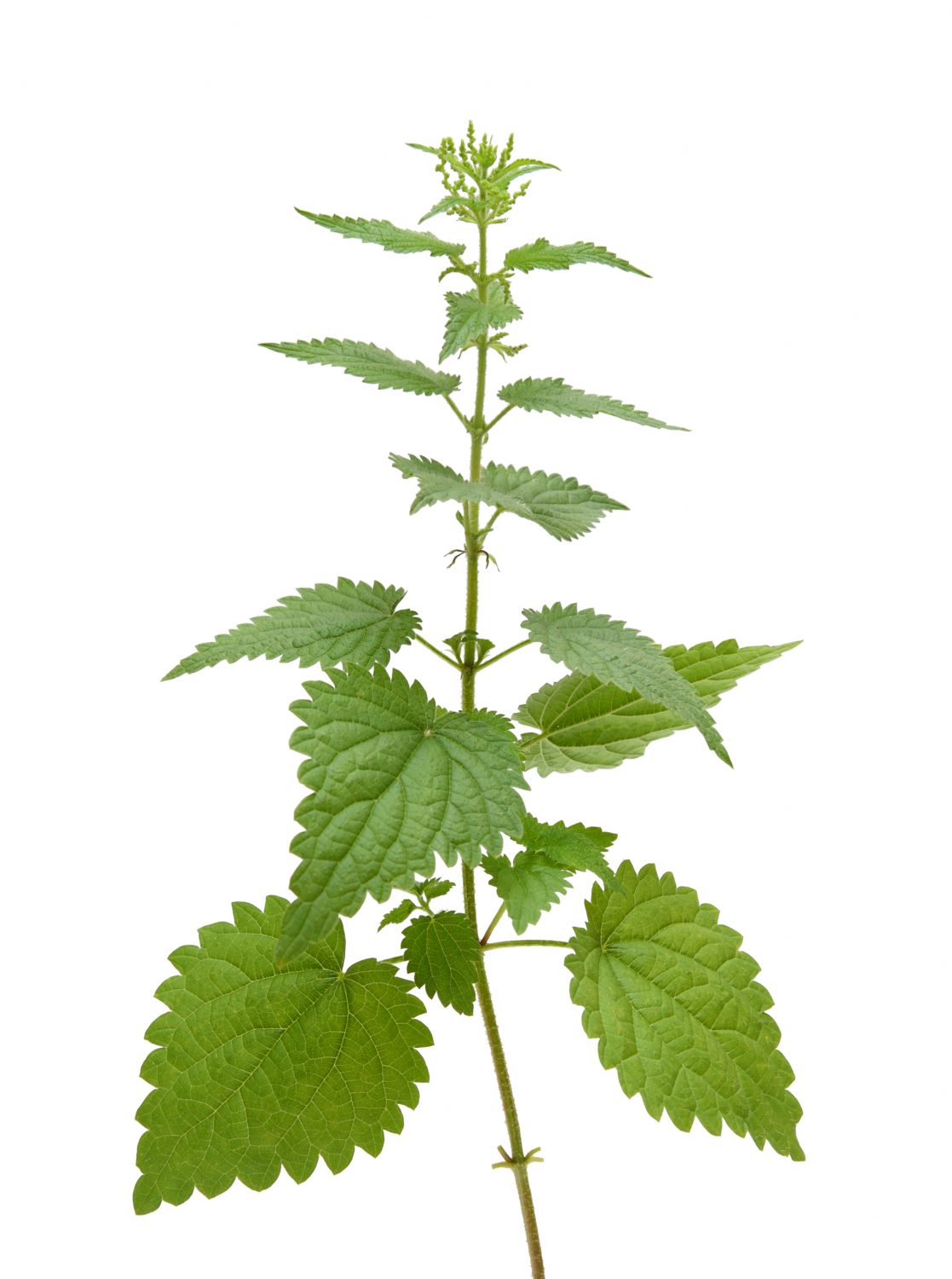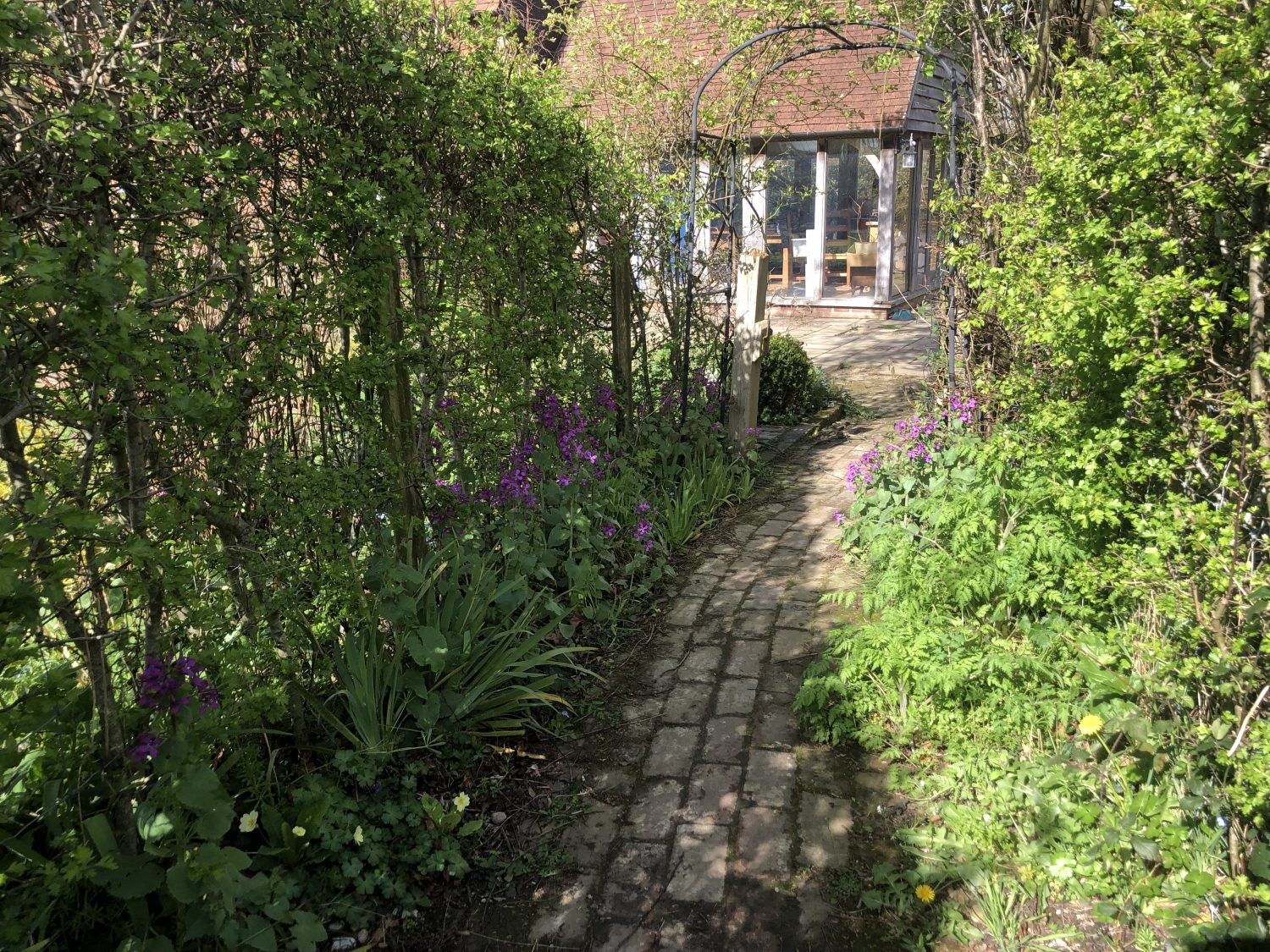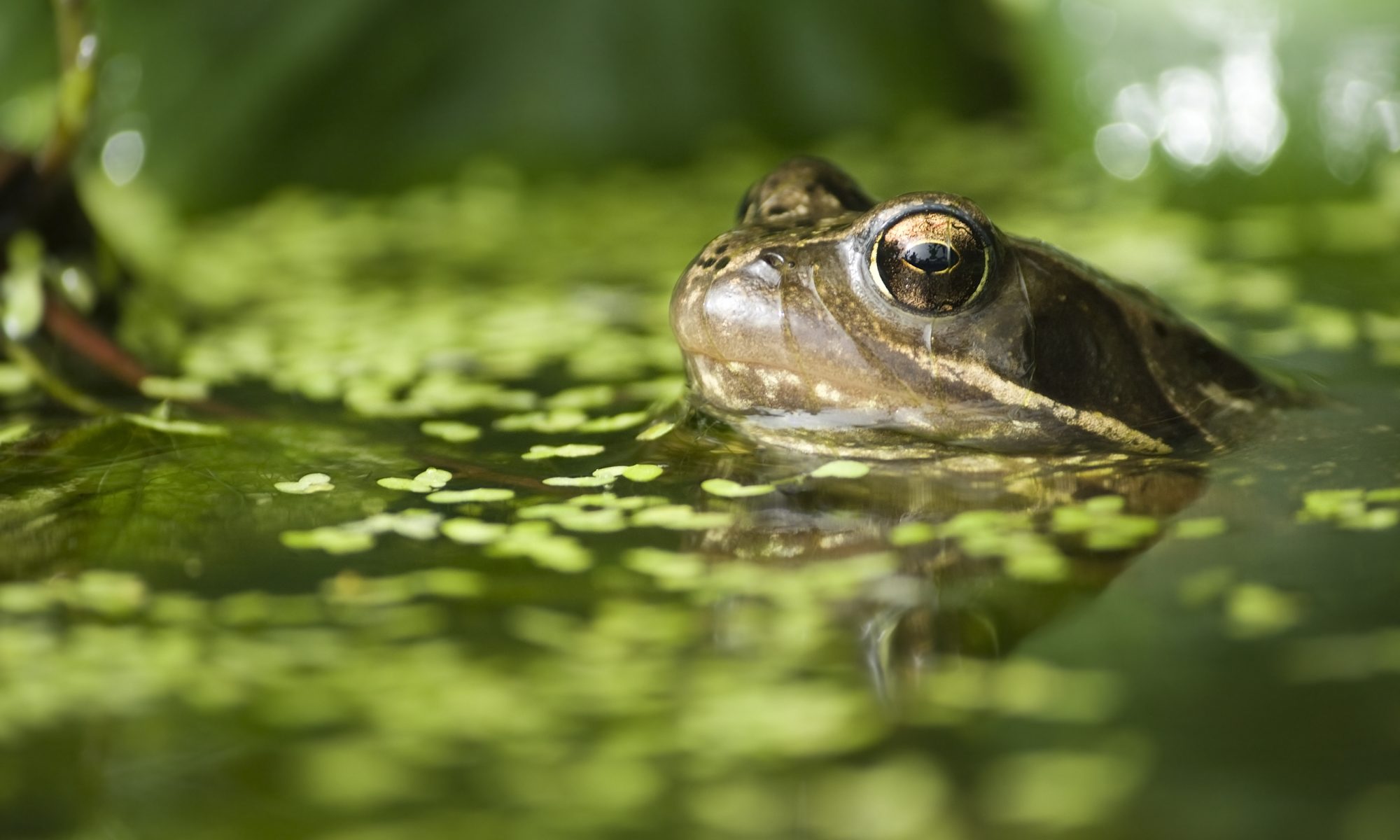Jo Arnell gives her tools a well earned rest and lets the garden do what it does best – embrace nature
Stop weeding. Stop mowing. Dig a pond and plant a tree – then relax while the wildlife looks after the garden for you. Well, okay, perhaps it’s not quite as easy as that, especially if you want a tidy space, but allowing things to be a little less ordered means that the ecosystem in your garden will benefit – and you will have less work to do. A garden that welcomes wildlife doesn’t have to be a complete wilderness though. There are ways of making a space look organised and well structured, while allowing the edges to ‘soften’ – it also shows that you’ve got the right green credentials and have thought about allowing room for nature.

Habitats
If you are lucky enough to have an outdoor space, you will know that it is a precious place. A garden can be a sanctuary – and not just for us humans. Wild plants and animals will be visiting, or may even have set up permanent residence. We can encourage them to feel more at home without having to inconvenience ourselves or spend money – it just takes a little insight and a basic understanding of some of their habits and life-cycles.
If you have a pond, a mature native tree, hedge or even just a patch of grass, your garden will be providing a vital habitat for a huge number of species. Some will be familiar, but many carry on their business unseen, underground, or are so minute that we don’t notice them. You will find the good, the bad and the ugly out there – all have a role to play, and a place in the ecosystem, if not in our hearts.
The single most important thing you can do to help wildlife is to make a pond. A source of water, however small, will be providing a place for creatures to drink and bathe. Formal raised ponds may make design statements, but are less useful than those at ground level, because it’s important that animals can get easy access to the water. A shallow area with a beach, or small pile of pebbles is essential, so that the creatures can climb in and out.
Ponds can be extremely decorative, especially if you are able to extend the liner to become a bog garden. There are lots of beautiful plants that will enjoy the damp environment – and extra insects, amphibians and birds that will be attracted in too. They don’t have to be big either – even a trough or a large bowl can make a useful water feature. Just be careful when choosing to install an actual pond if there are small children around – it would be better to delay the project until they are older and able to swim well.
Hedges and trees offer both food and shelter to many organisms – in fact a single mature oak tree will be supporting over two thousand species of fungus, lichen, insects, birds and mammals. Hedges are dense and impenetrable, bring structure and natural boundaries and divisions within the garden. Hedges also make ideal nest sites for small birds, which is why you shouldn’t cut a hedge between March and November.
Choose trees, shrubs and hedges for a wildlife friendly garden carefully. Flowers, scent, autumn tints and interesting bark are important, but a tree or shrub – especially a native species that bears fruit or berries, will not only look attractive, but also provide nectar-rich blossom, nesting places, and a vital source of energy-rich food as the weather starts to turn cold.
Natural charms
Once it was all about man controlling nature. Back in the eighteenth century wealthy people showed off by making highly ornate and ludicrously labour intensive gardens, packed with topiary, closely cropped lawns and exotic plants – and stacked to the gunnels with pots, statuary and gardeners.
Meanwhile, cottage dwellers cultivated attractive weeds among their vegetables, selecting and growing them over generations, allowing those with better manners and pretty flowers to stay in the beds and borders to be tamed into some of our age old favourites. Traditional cottage garden plants like foxgloves, forget-me-nots, honesty and Michaelmas daisies do tread a thin line between being weeds and wanted plants, I’ll admit, but I will always want a humble self-seeder –especially a biennial, because they provide early season colour – even in freezing early spring weather. Biennials spread happily around the garden without needing any cosseting and will often be found growing without a fuss in a dry shady corner where nothing else would dare to try. They are also brimful of nectar for bees and other pollinators.
These days we find that over-controlled, spartan and regimented gardens, where all the plants stand to attention or are vigorously trimmed and sprayed, lack charm and can look artificial and awkward. Creating a relaxed, romantic and informal space, where climbers drape beautifully over buildings and boundaries, and swathes of perennials drift abundantly through the borders takes time, patience and a certain amount of benign neglect. In this sort of garden there will be nooks and crannies, nesting sites and hibernation places, seed-heads and rose-hips – and the unexpected beauty of serendipity, when nature steps in and makes our deliberate designs and planting schemes look decidedly second rate.

A weed by any other name
The closer a plant is to its species and its natural habitat, the more robust, disease resistant and important to wildlife it will be. This is why the native weeds always out-compete our pampered and delicate garden plants – that have been bred in hot-houses and aren’t always prepared for the rugged rough and tumble of life in the actual outdoors.
Full of insect appeal and nectar-rich, some are – like stinging nettles – important food sources for the larval stage of butterflies and other useful creatures. Really weeds are just wildflowers in unfashionable clothing.
Of course there are many non-native garden plants that produce a useful amount of nectar, but the great thing about the indigenous species is that they have co-evolved with insects in this specific environment, tailoring the details of their life cycles over millennia to suit one another’s needs.
One thing to remember about flowers is that not all of them will produce nectar, having sacrificed their fertility for more petals. Many cultivated plants are sterile and while flouncy double blooms might look attractive to us, they are of no interest to pollinators. When you are buying plants, try to choose those with single flowers, as these will contain nectar. Plants in the daisy family are popular with pollinators, as the centre is the botanical flower and made up of a mass of tiny nectaries. They are also wide and flat, so act like a helipad for insects to land on easily. Group several of the same plant together too, so that butterflies and bees don’t waste precious energy as they flit from flower to flower.
Meadows
One way of making a meadow is simply to stop mowing the grass. Believe it or not, weeds in lawns are wildflowers too – and are just as useful to wildlife as the carefully selected beauties that we buy as seeds and plug plants. The way to make it look as if you haven’t abandoned your lawn, or broken the mower, is to mow paths through it, or create areas of short grass next to the patches of meadow. This will make a grassy area look well crafted and deliberate – and more suitable to wildlife too, as different species will thrive in the varied sward.
A garden that is cultivated to encourage wildlife will be a healthy one. A few leaves may get nibbled along the way and it may look a little scruffy around the edges and at certain times of the year. Meadow flowers have to be left to set seed, insects need somewhere to shelter among piles of logs, leaves or old perennial stems in the winter, and some weeds should be left at the margins as an early nectar source and for certain insect larval stages. In return for your thoughtfulness you will get free pest control, a living, buzzing space filled with birdsong and bustling – and the satisfaction that you are helping to maintain a healthy, natural balance and an environmentally friendly link to the wider surroundings.
Join Jo for Gardening Courses in her garden in Woodchurch, Kent 07923 969634 hornbrookmanor.co.uk
You may also like
Go with the Flow
Sue Whigham shares some valuable new-to-gardening advice I’m sure that by now we should be used to the rain but I’m not entirely sure that we are. We had a dry, sunny day the other day and how everybody’s mood...
Farm Fables
Jane Howard gets to the bottom of why so many ponds have disappeared across the High Weald I have a new passion, almost an obsession, it’s about ponds. And there’s a distinct possibility I might become a bit of a...
Hedge Issues
Sue Whigham takes a meander along nature’s verdant and vital corridors Recently the BBC’s Today programme carried a feature about England’s hedgerows which created a lot of interest among listeners. On the strength of that, Martha Kearney interviewed one of...












